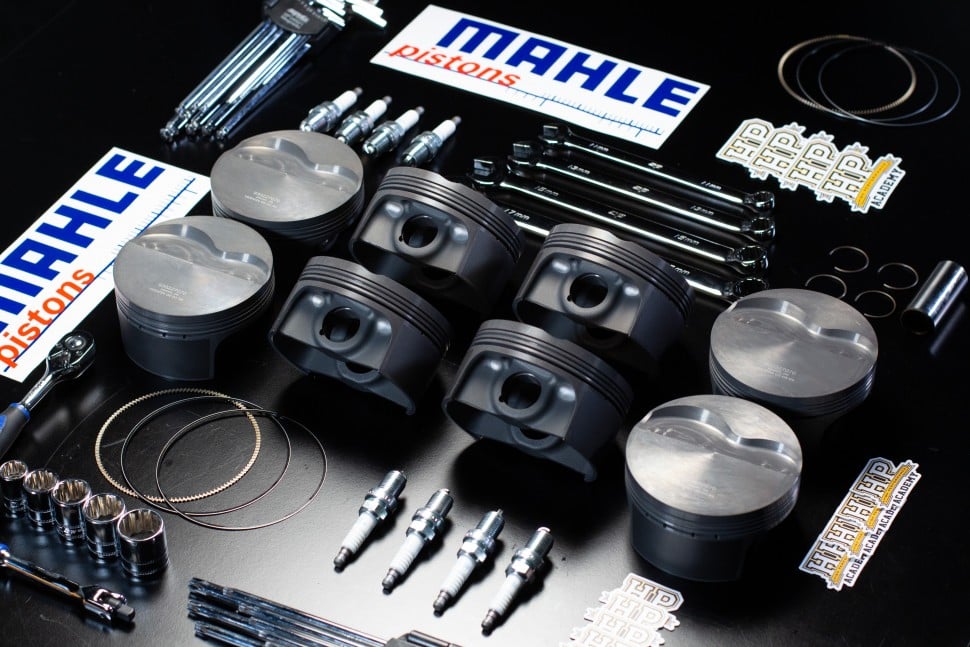| 00:00 |
- The next critical sensor we're going to look at is the engine coolant temp sensor, or ECT sensor for short.
|
| 00:06 |
This is also a negative temperature coefficient thermistor, and works on the same principle as the intake air temp sensor.
|
| 00:13 |
It's normally installed near the thermostat of the engine.
|
| 00:16 |
and is used to provide the ECU with information regarding the coolant temperature.
|
| 00:21 |
Before getting into the finer details, it's worth first discussing how engine temperature affects the operation of the engine.
|
| 00:28 |
When the fuel is delivered by the injector, some amount of this fuel will end up contacting the port wall and the back of the intake valve.
|
| 00:36 |
When the engine is at a normal operating temperature of perhaps 80 to 90 degrees centrigrade, this fuel tends to quickly evaporate due to the heat of these surfaces, and hence the fuel's introduced in an easily combustible vapour form.
|
| 00:49 |
When an engine is cold however, the fuel will tend to condense on these cold surfaces.
|
| 00:53 |
It's still make it into the cylinder, but instead of an easily combustable fuel vapour this condensed fuel tends to run into the cylinder in a liquid form, which is more difficult to ignite and burn.
|
| 01:05 |
This means that if we use the same quantity of fuel during cold start that we'd use at normal operating temperature, the engine will tend to run lean.
|
| 01:15 |
The solution is to supply additional fuel during cold engine operation, and the engine coolant temp sensor can be used to provide a warm up enrichment table or tables inside the ECU.
|
| 01:27 |
What we also find is that the amount of additional enrichment that's required during cold start is dependent on both engine temperature and air speed.
|
| 01:36 |
During low airflow operation like idle or cruise, we tend to see a lot of fuel condensing on the port wall and valve, however at wide open throttle when the airflow is a lot higher, it's less likely for the fuel to wet out the port walls and hence we don't need quite so much additional enrichment.
|
| 01:53 |
While a simple 2D table is adequate for dealing with warm up enrichment, we can find that adding a load input such as throttle position as a second variable can give more accurate control over the enrichment necessary, resulting in a more stable air/fuel ratio overall.
|
| 02:10 |
The engine coolant temperature sensor can also be used to manage coolant temperatures by switching on radiator fans when the temperature exceeds a preset limit It's also possible to use the input from the engine coolant temp sensor to employ some safety strategies if there's a problem with the cooling system and temperature continues to increase.
|
| 02:31 |
In this situation, the ECU may inject additional fuel to aid cooling, retard the ignition timing or reduce the engine rev limit to help prevent engine damage.
|
| 02:40 |
In summary, the engine temperature is a critical metric to monitor if we want to maintain a consistent operation of our engine, particularly during cold start operation and this is why we'll typically find an engine coolant temperature sensor fitted near to the engine's thermostat.
|
| 02:57 |
This primarily allows the ECU to adjust the tune to suit the engine's temperature most notably during cold start and warm up operation when more fuel is needed.
|
| 03:07 |
The information provided by the ECT sensor is also used by the ECU to manage fan control and potentially other safety strategies in order to protect the engine.
|





